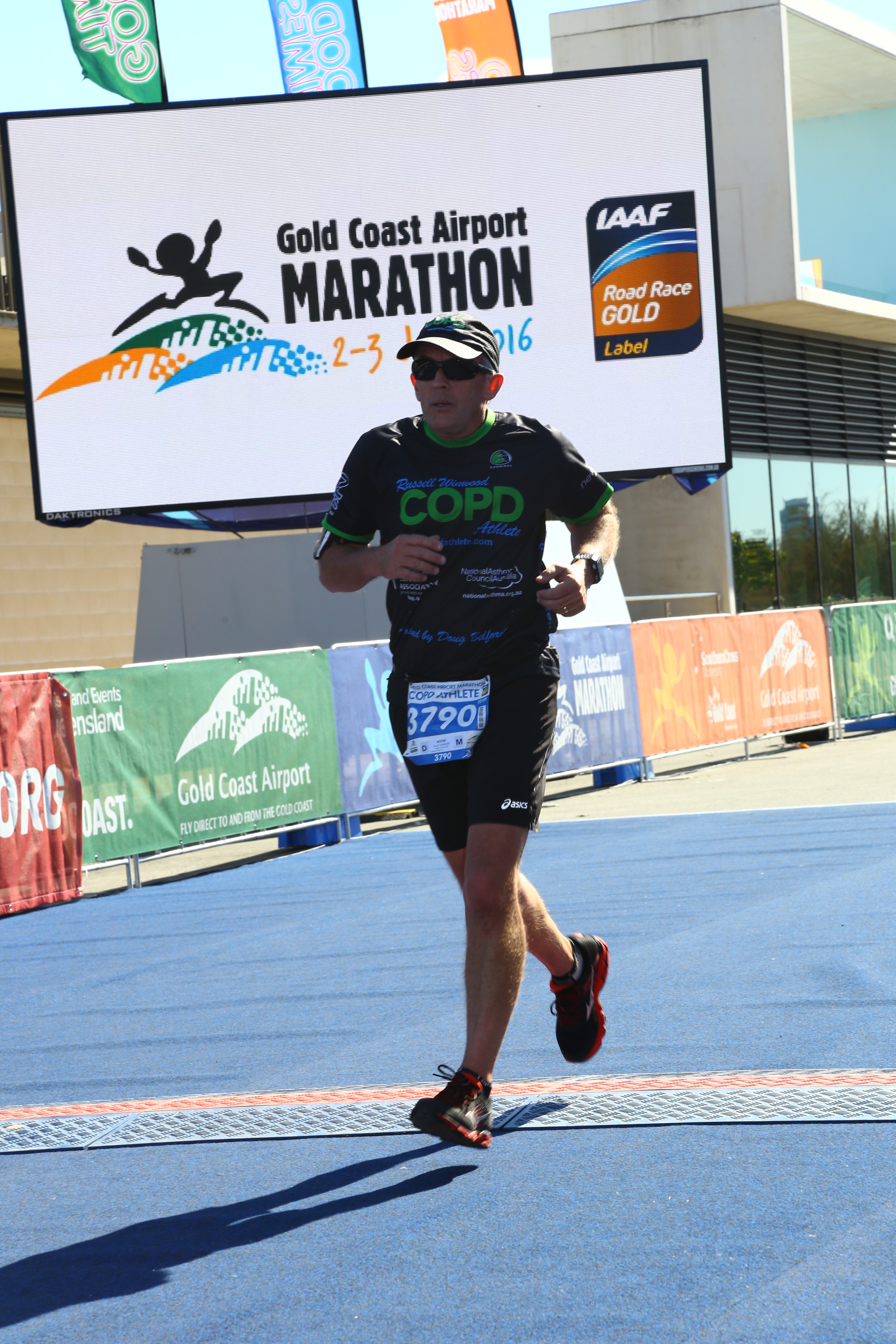The Gold Coast marathon has come and gone for another year but the significance will last for many years for me. My first sub six-hour marathon, something I never thought possible when I was first diagnosed with COPD.

Sub six hours to the average marathoner is nothing to become too excited about but when your respiratory system is severely obstructed it’s a big deal. Last year when training for the New York marathon I realized if I was to complete a marathon I had to be able to control my breathing in a way that would keep my body well oxygenated so other issues didn’t arise. Muscle fatigue and keeping your body well oxygenated is a real issue when doing endurance events. In my case the problem is heightened due to the pressure on my respiratory system which is already compromised.
My first ever marathon back into 2012, which was the 3rd leg of the Port Macquarie Ironman, was 80% walking 20% running. The Gold Coast marathon on Sunday was 90% running 10% walking. For many people in the respiratory world this in the past would be something unobtainable, especially for someone with 27% lung function. However, what I have learned over the last 4 years of racing is the more conditioned my body becomes the better it can utilize oxygen.
What happens when your body becomes better at utilizing oxygen? Many things become more achievable, from daily activities to running a marathon.
Muscle fatigue didn’t start to take its toll on me until very late in the race, not what I was expecting. In the New York marathon fatigue really set in around the half way point of the race. In Sunday’s race it become a factor in the last 10km. In saying that, my last 10k times didn’t drop away too much. My race plan at the Gold Coast marathon was to go out hard and see how long I could last. Within the first 20 minutes I decided that wasn’t a good plan today.
I never know from one day to the next how the conditions outside are going to affect my breathing and I was wheezing and quite short of breath early on. Like any athlete you have to be able to reevaluate your race when things aren’t going according to plan. So that’s what I did, concentrating on running at a pace that I was comfortable with. In hindsight it was a good plan as the fatigue I was expecting around the 26k mark didn’t hit until the 32k mark.
The lesson learned from the Gold Coast marathon and other races I’ve competed in is simple. We can all improve our quality of life no matter where our starting point is. For a respiratory patient activity costs nothing and can start simply by getting up! At the start of the day 5hrs 34mins to finish the race this was on the high side of my expectations and a time that I’m very happy with. It has certainly given me some new goals for my future races. Sub 5 hours!
#Stay tuned for Part III of nutrition in coming weeks!
Congratulations! Well done.
Thanks David.
Well done Russ, you’re a champion!
Thanks Roger.
you are so inspiring, reading this makes me want to get better and more consistent with my excercise. Am 77 have had COPD for 20 yrs, was a very competative runner and three day eventing on horses.
Congrats Russ! What an inspiration you are!!
Thanks Sue
Up, Up and Away!! Well done!
You have given me hope, I have been walking daily working towards just being able to function for the day. I have new found hope thanks to you!!!
Thanks Lise, good luck in your fight!
Wow russ, as always such an inspiration. Well done, very very well done. COPD has been a real roller coster for me and the loss of competitiveness in shorter events led to me taking alot of time off of training and racing. The the words above ” Many things become more achievable, from daily activities to running a marathon.” ring out for me. And in the last few weeks i’ve started to get back to pushing myself. So this is timely reminder for me, no never quit, move the goals. SO thankyou.
Thanks Luke, very happy to hear your back in the grind!
Very inspiring!! Keep it up!!